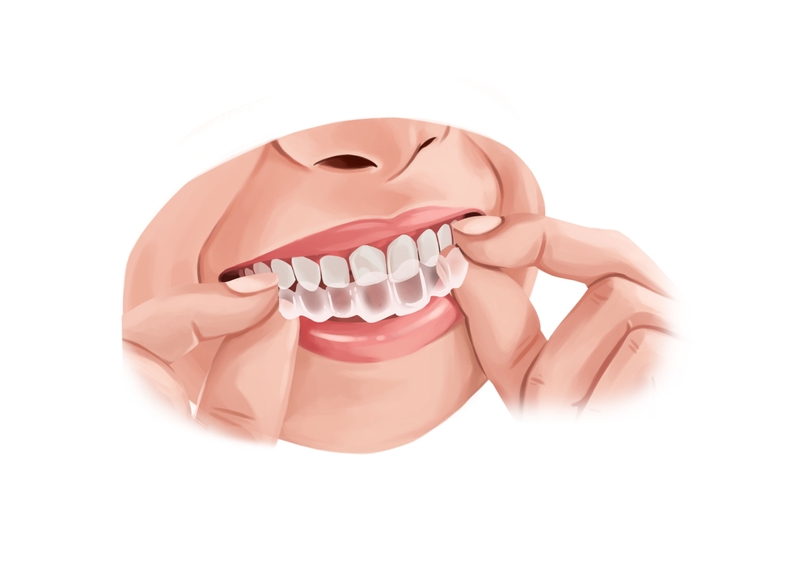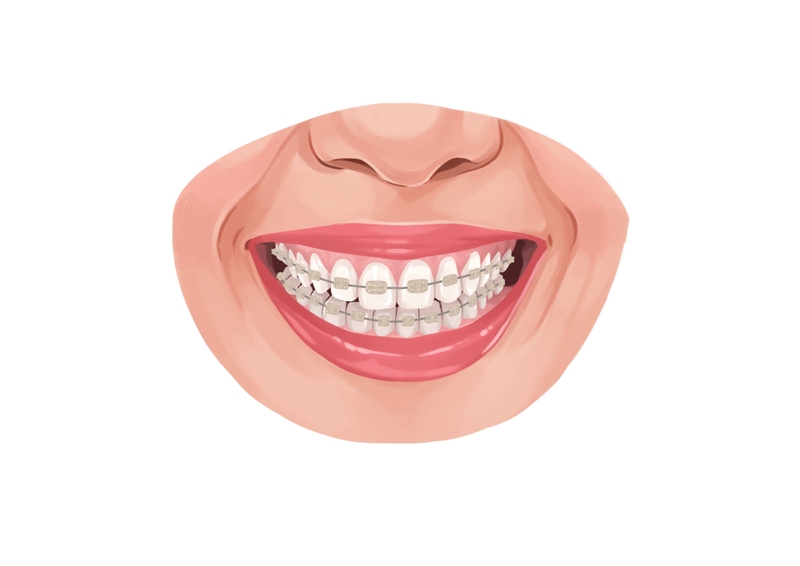- A crossbite is a form of malocclusion in which the upper and lower teeth do not meet properly. Doctors distinguish between a posterior crossbite, an anterior crossbite and a unilateral crossbite.
- Common causes of a crossbite include genetic factors, abnormal eruption of teeth or early childhood habits. Crossbites can lead to gum recession, inability to chew, and periodontal compromise.
- You can correct crossbites with braces, elastics, Invisalign, expanders, headgear and surgery.
How can you tell if you have a crossbite? Here's everything you need to know.
Crossbite definition

Picture by Authority Dental under CC 2.0 license
In order to understand what a crossbite is, you must first understand what a healthy, normal occlusion looks like. “Occlusion” is the way your teeth come together when you bite down. A normal posterior occlusion occurs when the cusps of the maxillary molars and premolars touch the fossa of the mandibular molars and premolars. “Fossa” is the depression between cusps. A normal anterior occlusion occurs when the maxillary incisors occlude with the lingual aspect of the mandibular incisors.
The opposite of a normal occlusion is a crossbite. There are several forms of a crossbite, and individuals can have more than one type of crossbite at a time.
Anterior crossbite
An anterior crossbite is one of the most common crossbites encountered during the eruption of the dentition. It usually presents during the phase of mixed dentition - when the individual has both primary and permanent teeth. It is usually caused by disharmony between the skeletal, dental, and functional components of the individual’s system.
There are three types of anterior crossbites: skeletal, dentoalveolar, and functional. We will discuss the dento-alveolar crossbite. This crossbite can occur when the maxillary anterior teeth are lingually aligned with the mandibular anterior teeth. A healthy alignment of anterior teeth occurs when there is a slight overjet of the maxillary teeth. An anterior crossbite will cause abfractions in either the maxillary or mandibular anterior teeth - or both. It can result in periodontal pathology that includes gingival recession, bone loss, and even tooth mobility and loss.
Posterior crossbite
Posterior crossbites are even more common than anterior crossbites. They can occur in both the mixed and permanent dentition and are thought to be transferred from the primary to the permanent teeth. A posterior crossbite is an occlusion in which the premolars or molars occlude abnormally. An abnormal occlusion occurs if the maxillary posterior teeth do not occlude with the foss of the mandibular posterior teeth.
A posterior crossbite most often occurs unilaterally, meaning on one side of the arch. It can be caused by a combination of skeletal, dental, and neuromuscular components. The most frequent cause is the inadequacy in the width of the maxillary arch. This could occur naturally during the eruption or be caused by oral habits. If a posterior crossbite remains untreated, it can cause asymmetric mandibular development, facial disharmony, and issues in the temporomandibular joint.
Bilateral crossbite
A bilateral crossbite impacts both sides of the arch. If there is a bilateral posterior crossbite, that means that the maxillary posterior teeth occlude inside of the mandibular posterior teeth. This is often the result of an underdeveloped maxillary jaw.
Unilateral crossbite
As we mentioned, a unilateral crossbite occurs when just one side of the arch is involved in a posterior crossbite. The most common cause for a unilateral posterior crossbite is a narrow maxillary arch. Since there is a discrepancy between the narrow maxillary arch and the wider mandibular arch, the mandible is guided towards one side or the other, causing the crossbite.
What causes a crossbite?
Crossbites can form from a variety of things, either naturally occurring or from oral habits. The most common causes for a crossbite are genetics, prolonged retainment of primary teeth, and abnormal eruption of permanent teeth.
Habits like thumb sucking and unnatural swallowing patterns can also cause a crossbite to form if performed over an extended period of time. These actions generate pressure that is damaging to the tissue, teeth, and bone.
What are the dangers of an untreated crossbite?
Many individuals do not understand the negative consequences of a crossbite and other types of malocclusion. Many think that orthodontics are performed simply to fix the esthetics of a smile. However, crossbites can actually cause irreparable damage to the teeth if left untreated. Some of the more serious dangers are:
masticatory inefficiency,
periodontal impairment,
inability to perform proper oral hygiene,
temporomandibular joint irritation,
speech impairment,
premature wearing.
How to fix a crossbite?

Picture by Authority Dental under CC 2.0 license
There are six most common ways to fix a crossbite. Depending on your unique situation, not all options may be available to you.
Braces
Braces have been the most common method used to correct a crossbite. This involves fixing metal or acrylic brackets to the teeth and then placing a series of wires for an extended period of time, typically two years.
Some individuals complete their entire treatment in one placement, but sometimes braces are initially placed at a younger age to help the eruption of the permanent teeth. After the permanent teeth have erupted, braces may be placed again to finish the alignment.
Elastics
Elastics are often used as part of orthodontic (braces) treatment. They are small rubber bands that connect your maxillary braces to your mandibular braces and are used during the bite-fixing phase of braces.
Invisalign
Invisalign is a popular alternative to braces, though not all individuals are candidates for Invisalign. Invisalign is a set of clear aligners that slowly move your teeth into the correct alignment. You may have “buttons” placed on your teeth that help with the movement. These are tooth-colored and nearly unnoticeable.
Expanders
Expanders are often used to treat a narrow or underdeveloped maxillary arch. These are removable appliances that are either tightened at home or by a dentist or orthodontist. They can be used at a young age to help prevent malocclusion.
Headgear (face mask)
Headgear is sometimes used during orthodontic treatment. Headgear involves using external parts that are braced with the head, neck, or chin. Using headgear provides additional anchorage to move the teeth into alignment.
Surgery
In some severe cases, surgery is necessary to fix a crossbite. This is often done by an oral surgeon in a hospital setting and corrects jaw alignment. More treatment (like orthodontics) may be needed after surgery.
FAQ
What is the best age to start a crossbite treatment?
How to fix a crossbite at home?
There are companies that claim to be able to fix a crossbite using aligners that can be delivered to your home. They send you a kit so that you can take impressions of your teeth, and once they receive the impressions, they fabricate aligners and a treatment plan to fix your crossbite.
We do not recommend treating a crossbite - or any other orthodontic problems - in this manner. There are many things to consider when correcting the alignment of your teeth, and it is best to see a professional who can monitor the movement of your teeth.
Can Invisalign fix a crossbite?
How long does it take to fix a crossbite?
Can a crossbite affect speech?